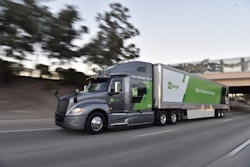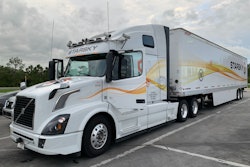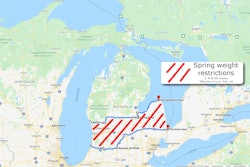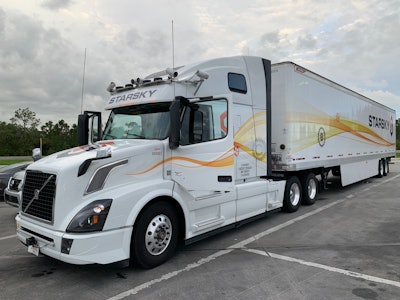 Starsky in June 2019 performed a 9.4-mile run in a completely unmanned truck at highway speeds on public roads.
Starsky in June 2019 performed a 9.4-mile run in a completely unmanned truck at highway speeds on public roads.Starsky Robotics, an autonomous truck developer that also operated as a 50-truck motor carrier as recently as a year ago, has wound down its trucking operations. Though the company remains in tact, at least on paper, “I don’t think anybody is technically on the payroll,” says Paul Schlegel, the company’s former senior vice president.
Schlegel, who has worked at fleets for more than three decades, was hired by Starsky to manage the company’s trucking business. Starksy operated as a DOT-registered motor carrier as a means to build its business and test its autonomous systems.
The company scored $17 million in funding in 2018 and, in the middle of last year, operated a nearly 10-mile run in Florida with a live load in a completely unmanned vehicle on a public road, with the truck being piloted by autonomous programming and monitored in an office remotely.
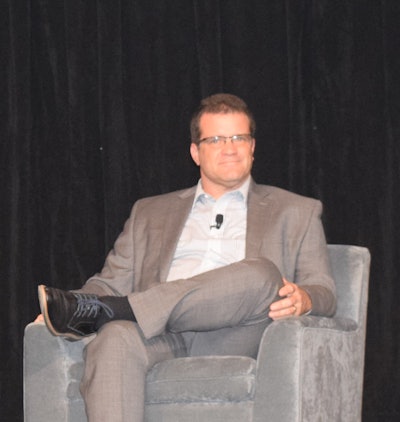 Paul Schlegel, head of Starsky’s former trucking operations, spoke in a panel discussion in September at the FTR Conference about autonomous truck development.
Paul Schlegel, head of Starsky’s former trucking operations, spoke in a panel discussion in September at the FTR Conference about autonomous truck development.“We were on the right path – but venture capital is a little fickle,” Schlegel says. “We’d engaged with manufacturers about putting our system on. We had done all that, and had totally redesigned our [remote driver] tele-ops stations to be ergonomically appropriate.”
VC investors weren’t interested enough in being part of an asset-heavy business like the trucking company Starsky had become, Schlegel believes, where building equity slowly with those assets and a big idea looked like the chief principal value. “They wanted to put money into engineers and sell that idea to somebody else,” he says.
When the funding round fell apart, the company tried everything it could think of in the short time it had to keep the lights on, “because we were going to run out of cash,” Schlegel says. That included reaching out to private equity investors and potential outright buyers.
No one stepped forward, ultimately, though the trucking business was “very close to making money” on its own, and that includes paying the salaries of so many software engineers and other extra staff to support the autonomous tech development, Schlegel says. “You’re not going to offset all of those costs with a trucking operation right away, yet you need that [trucking] operation if you’re going to get quality drivers.”
Schlegel said the company wound down the trucking operations and laid off its drivers.
“We did it right, at least,” he says. “Not one driver got left stranded. We made sure they were home and the equipment was secure.


